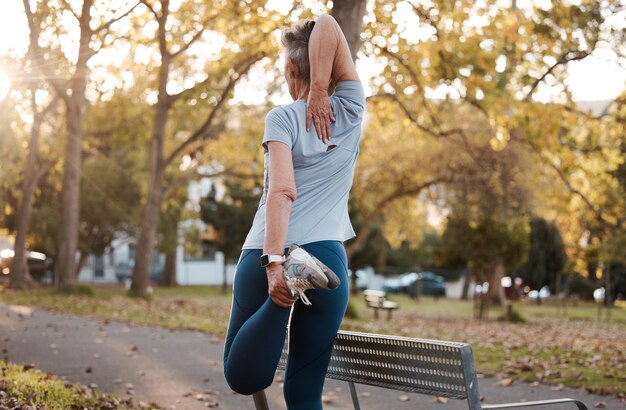Finding Relief: Best Approaches to Treating Arthritis in the Lower Back
Dealing with arthritis, particularly in the lower back, can often feel like an uphill battle—an unpredictable mix of discomfort, stiffness, and aching that makes even simple movements a challenge. If you or someone you love struggles with this condition, you're likely all too familiar with the cycle of searching for effective relief. But what really is the best treatment for arthritis in the lower back?
This article provides a comprehensive look at the various treatments available, focusing on multiple angles and practical advice, without venturing into the territory of medical advice. From lifestyle changes to cutting-edge therapies, we outline options that may provide relief and improve your quality of life.
Understanding Arthritis in the Lower Back
What is Arthritis?
Arthritis isn't just a single condition—it's an umbrella term for numerous disorders that affect joints and surrounding tissues. In simple terms, it involves inflammation of one or more joints, with osteoarthritis being the most common type affecting the lower back.
Why Does Arthritis Occur in the Lower Back?
The lower back, or lumbar spine, bears a significant portion of the body's weight, making it susceptible to wear and tear over time. This wear can lead to the degeneration of cartilage—the cushion at the ends of bones in a joint—leading to pain, swelling, and stiffness.
Symptoms to Look Out For
Common Symptoms:
- Persistent lower back pain, especially after standing or walking
- Stiffness, especially in the morning or after sitting for long periods
- Reduced range of motion or flexibility
When to Seek Help:
If these symptoms persist and interfere with daily activities, it's important to consult a healthcare professional to explore suitable treatment options.
Treatment Options: Finding What Works
Lifestyle Modifications
Stay Active
Although it might seem counterintuitive, gentle exercise is often recommended for managing arthritis. Activities such as swimming, walking, or cycling can help maintain flexibility and strengthen the muscles supporting your back.
- Benefits of Regular Exercise:
- Reduces stiffness
- Enhances flexibility and range of motion
- Improves mood and energy levels
Maintain a Healthy Weight
Carrying extra weight can increase stress on the lower back. Weight management helps reduce strain on your joints and may alleviate symptoms.
Ergonomics Matter
Adjust your home and work environments to support your spine health. Ergonomic chairs and supportive mattress options can make a significant difference in managing arthritis symptoms.
Medication and Supplements
Over-the-Counter Pain Relievers
Non-prescription medications like ibuprofen can be used to manage pain and inflammation. However, long-term use should be discussed with a healthcare provider.
Prescription Medications
For persistent symptoms, doctors might prescribe stronger medications, including steroid injections for more immediate relief.
Supplements
Supplements like glucosamine and chondroitin sulfate are often explored by arthritis sufferers. While studies on their effectiveness are mixed, some individuals report subjective improvements.
Physical Therapy and Alternative Therapies
Physical Therapy
Working with a physical therapist can be transformative. They design personalized exercise programs focusing on stretching and strengthening to support your back.
Acupuncture and Massage
These alternative therapies may offer pain relief by improving blood flow and reducing muscle tension.
- Benefits of Acupuncture and Massage:
- Targeted pain management
- Improved circulation
Modern Medical Interventions
Chiropractic Care
Chiropractic adjustments can sometimes provide relief by improving spine alignment and function.
Surgical Options
In severe cases where other treatments have failed, surgery might be considered. Procedures like spinal fusion can help stabilize joints but come with risks necessitating careful evaluation and discussion with healthcare providers.
Self-Care and Home Remedies
Heat and Cold Therapy
Applying heat or cold packs can provide temporary relief. Heat therapy helps relax muscles, while cold therapy reduces inflammation and numbs sharp pain.
Mind-Body Practices
Techniques such as yoga, tai chi, and mindfulness meditation promote relaxation and pain management through gentle movements and breath control.
Empowering Yourself: Taking the Next Steps
Living with arthritis requires not just managing physical symptoms but also embracing a proactive approach to wellness. Here are some final thoughts and strategies that can guide you in your journey.
Consistent Monitoring: Chart your symptoms and treatment responses. This can help both you and your healthcare provider determine the most effective approaches.
Emotional and Mental Wellness
Managing arthritis isn't solely about physical health—it's essential to care for your mental well-being. Connect with support groups or counseling services to navigate the emotional rollercoaster that can accompany chronic pain.
Stay Educated: Keep yourself informed about the latest research and treatment modalities. Advances in medical science continue to expand the toolbox available for arthritis management.
Approaching arthritis in the lower back from multiple angles ensures you're addressing the condition holistically. Lifestyle adjustments, medical interventions, and emotional support all play crucial roles. Remember, each person's journey with arthritis is unique, and patience is key in discovering what works best for you.
🗂️ Practical Tips Summary
- Stay Active 🏃♀️: Engage in gentle exercises like walking or swimming.
- Healthy Weight ⚖️: Manage weight to reduce stress on your back.
- Ergonomics 🪑: Use supportive furniture to ease back strain.
- Pain Relief 💊: Explore medications and supplements, consulting with healthcare guidance.
- Therapies 👐: Consider physical therapy, acupuncture, and massage.
- Modern Options 🔬: Stay informed about advanced medical interventions.
- Mind-Body Practices 🧘♂️: Incorporate yoga, tai chi, and meditation for holistic care.
This holistic approach can help you tackle arthritis in the lower back, offering a pathway to improved comfort and quality of life. 🌟

Related Articles
- Are Bananas Bad For Arthritis
- Are Tomatoes Bad For Arthritis
- Can An Inflamed Nerve Cause Arthritis
- Can Arthritis Be Cured
- Can Arthritis Be Reversed
- Can Arthritis Become Septic After Infection From Injection
- Can Arthritis Cause Numbness
- Can Arthritis Cause Swelling
- Can Cracking Knuckles Cause Arthritis
- Can Cracking Your Knuckles Cause Arthritis